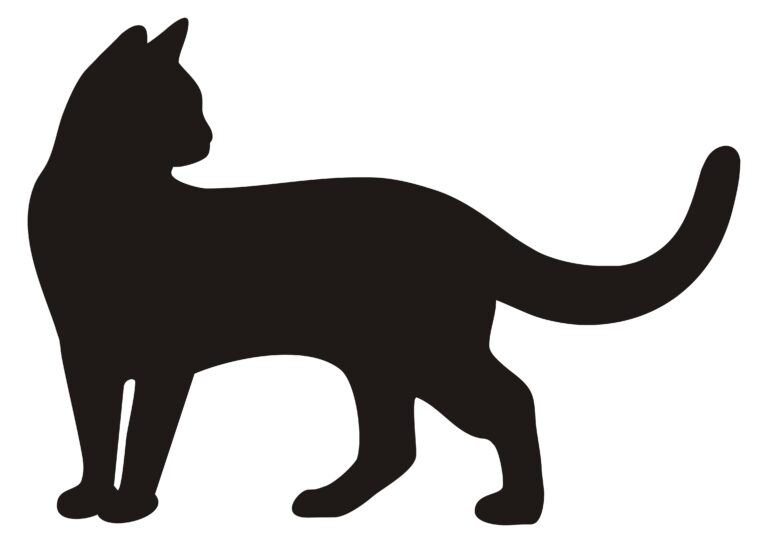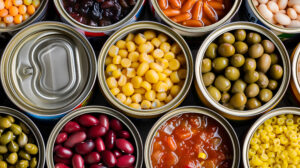On December 26th, the Oregon Department of Agriculture reported the death of a house cat after transmission of H5N1 avian flu through raw pet food. The HPAI (highly pathogenic avian influenza) outbreak nears its fourth year, progressing through birds, dairy cows, and other mammalian species. According to the CDC, the current public health risk is still low and there has been no person-to-person spread.
Through genome sequencing – done by the USDA, the National Veterinary Services Laboratories (NVSL), and the Oregon Veterinary Diagnostic Laboratory (ODVL) – pet food was linked to the H5 strain that infected and killed a household cat. This incident led to the recall of Northwest Naturals’ 2lb Feline Turkey Recipe raw and frozen pet food, a product sold across 12 states in the United States and in the British Columbia in Canada. The cat’s owners are being monitored during this time, but as of now, no human HPAI transmission has been linked to this case.
Feline sensitivity to the virus has been seen elsewhere. On December 20th, the Los Angeles County Department of Public Health announced an update on H5 infection in household cats. The report detailed one household that experienced illness in seven cats after exposure to raw milk. Five of these cats died or were euthanized, four of which were confirmed as contracting H5N1. Another instance was described that linked cats’ illnesses to pet food containing raw poultry and beef. Two cats were euthanized, and one cat is currently experiencing symptoms and is positive for influenza A.
The Wild Felid Advocacy Center of Washington is currently under quarantine, having experienced sickness in over half of its wild cats and 20 deaths. The center witnessed many cats go from experiencing mild symptoms to fatal pneumonia within 24 hours. While the cause of the outbreak has not been confirmed, it is suspected that the virus was passed to the cats from exposure to infected birds or through contaminated pet food. The center has undergone quarantine until further notice.
Pathogens like H5N1 can be eliminated through the proper cooking of meat and pasteurization of milk. Therefore, to help limit the spread of this highly pathogenic virus and other foodborne pathogens, consumption of raw meat and dairy products and contact with sick animals should be avoided.
COVID Risk Matrix:
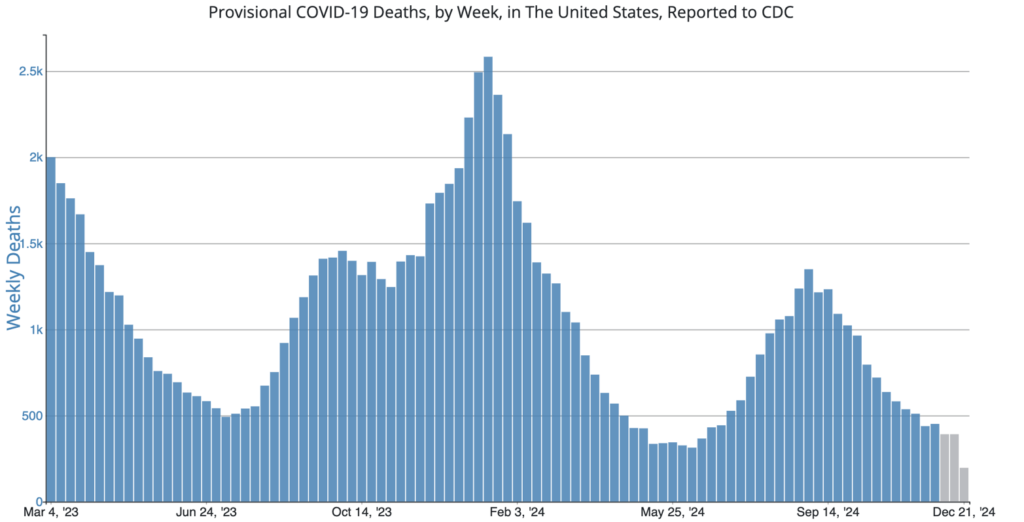
Influenza:
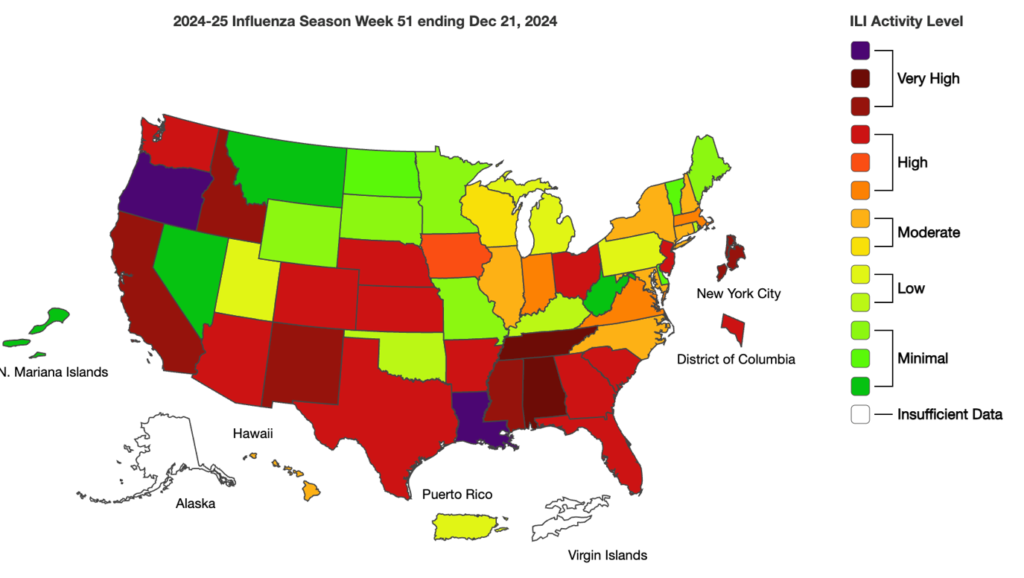
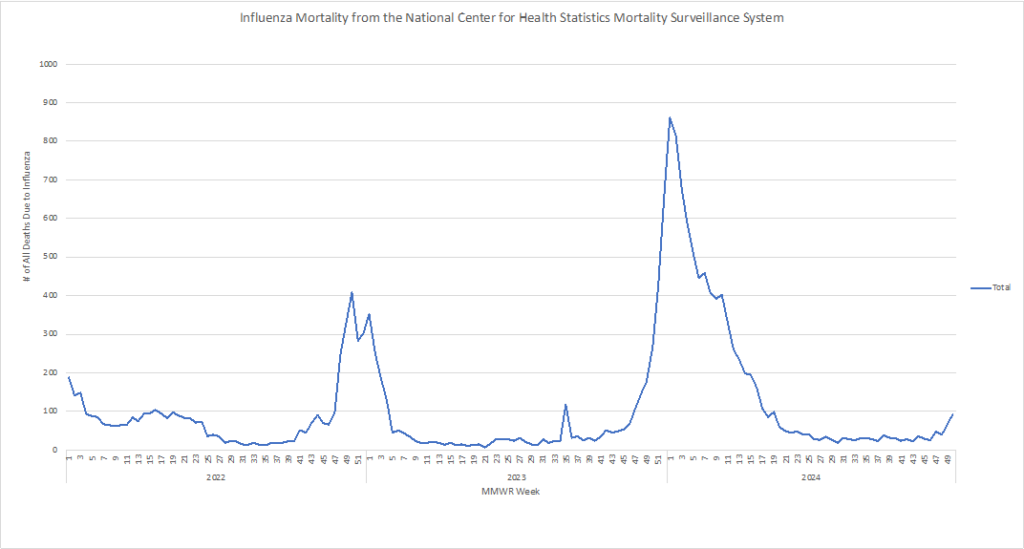
- FDA reports on the effectiveness of at-home combination tests for COVID-19, Influenza A, and Influenza B. The Healgen test correctly identified 99 percent of negative and 92 percent of positive samples of SARS-CoV-2; it also identified 99.9 percent of negative flu A and B samples and 92.5 percent of positive flu A and B samples. Comparatively, the Lucira test correctly identified 99.9 percent of negative and 88.3 percent of positive COVID-19 samples; it also identified 90 percent of positive and 99.3 percent of negative flu A samples. For flu B, which is not widely circulating right now, it identified 99.9 percent of negative samples.
- Flu vaccine rates in the US through 12/23/24 are generally in line with last season. It is estimated that 41% of people over 18 have received their vaccine. 42% of children ages 6 months to 17 years have been vaccinated; last year this rate for children was 44% at this point in the season.
- As 2025 begins, Canada’s chief public health officer, Dr. Theresa Tam, is closely monitoring threats from H5N1 bird flu and measles.
- Norovirus cases in the US are trending higher this year.
- The genetic analysis of the H5N1 avian flu virus in specimens from the nation’s first severely ill hospitalized patient in Louisiana reveals mutations that may enable upper-airway infection and greater transmission. However, the mutation happened after the patient was infected and is not reflective of the other human cases. This leads the CDC to continue to state that the risk to the general population is low. If the reassortment had occurred in an animal, the concern would be higher. Regardless, the CDC urged ongoing genomic surveillance in people and animals, containment of H5N1 outbreaks in dairy cattle and poultry, and prevention measures among people exposed to infected animals or environmental settings.
- On December 23, 2024, the FDA began a domestic sampling assignment to collect and test aged raw cow’s milk cheese for Highly Pathogenic Avian Influenza (H5N1). Research & Studies for additional information.

